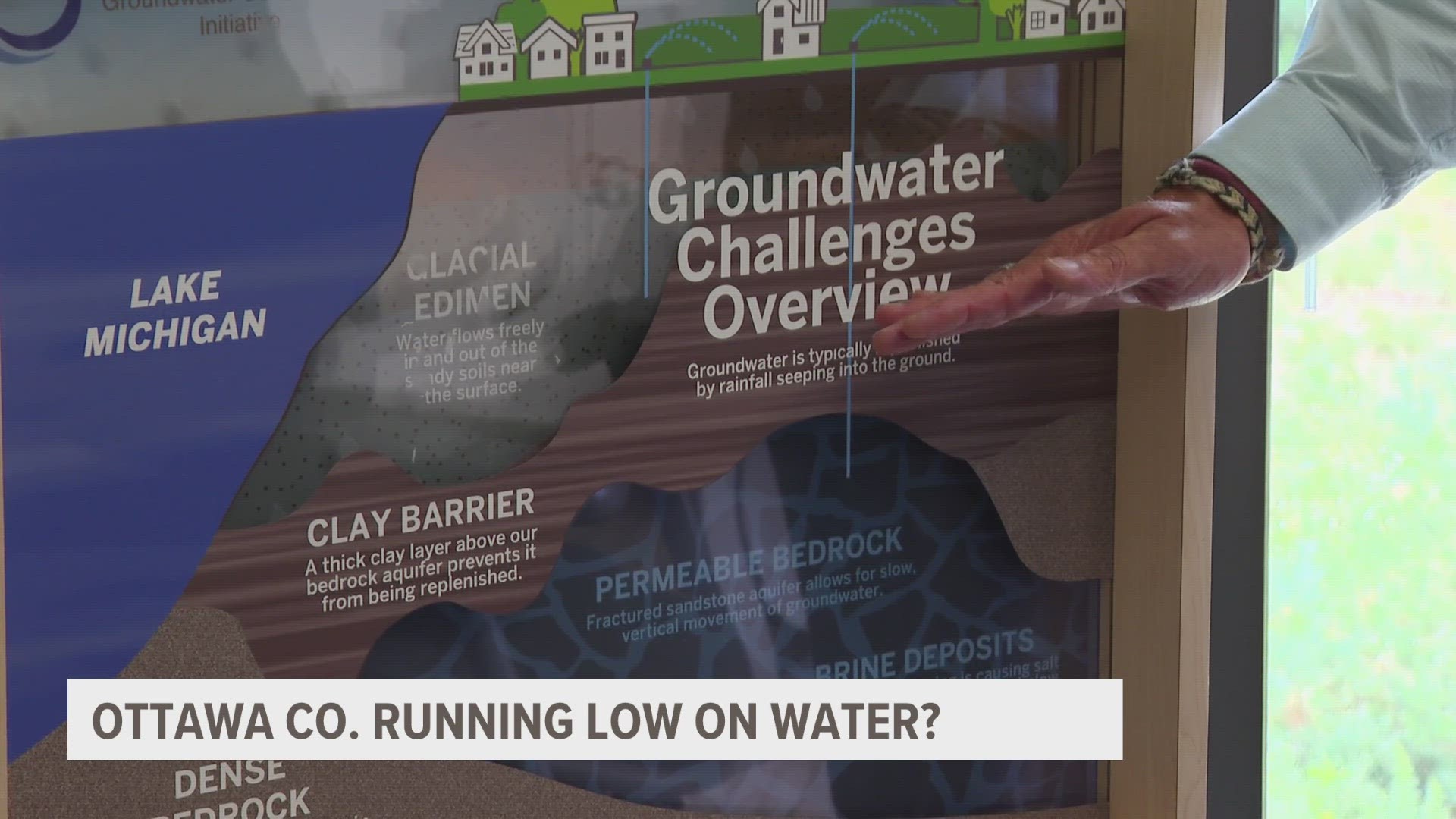OTTAWA COUNTY, Mich. — Despite its proximity to Lake Michigan, concerns a critical source of Ottawa County groundwater may be running dry remain.
County officials were in the midst of an ongoing project to bore dozens of monitoring wells and outfit them with sensors to detect static groundwater levels and ensure experts would be apprised, in real time, of any changes with regard to the county’s water supply.
The program, made possible with funding from the state legislature via a $1.1-million expenditure approved in 2021, also prioritized public outreach and education.
“If we don't start to take into consideration what's happening with our groundwater supply… there will be more of a challenge with people having access to potable water,” Paul Sachs, the Ottawa County Strategic Impact director noted.
In the meantime, Sachs said, county sustainability initiatives were acting upon the conclusions experts had already drawn:
“It will only get worse,” he related.
Lake Michigan, one of the largest bodies of fresh water on Earth, forms Ottawa County’s Western boundary in its entirety, from North to South, county line to county line. How can a place with access to so much water, not have enough of it?
“The challenge with the Marshall Sandstone, the deep bedrock aquifer is that it's not recharging as fast as water is being withdrawn,” Sachs explained.
Running beneath large sections of Ottawa County is a thick layer of clay, which rests atop portions of the aquifer. The clay, in effect, a cap, prevents the system from refilling--even when it’s pouring rain outside—at a rate sufficient to satisfy the needs of the area’s ever-expanding population. It has no or little connection to the lake water beyond.
“The water you're pumping from the ground is a completely different system that operates much differently and won't always be there,” he said.
Experts estimated the aquifer’s water level had fallen some 40 feet over the course of approximately 35 years. They project its water volume will diminish further, dropping 20 feet in 15 years.
“The trends that we had from the initial studies will show that that water level will continue to drop,” Sachs related. “Knowing that we have bedrock aquifer system with a dwindling supply of groundwater, and then using that potable groundwater supply for landscape irrigation is a big focus for us.”
A Michigan State University study found county landowners were using 3-billion-gallons of water per year to irrigate their lawns, in comparison to the entirety of the local agriculture industry, which consumed roughly two-billion over the same time period.
A sustainability initiative recently implemented at the Ottawa County complex in West Olive had crews replacing the county’s turf grass with water-conscious native plants and grasses.


“It takes education. It takes better data,” he suggested. “Those definitive answers we do not have.”
But they’re hoping to get them…
Once its network of wells and sensors is complete, officials suggested the data would be compiled and used to generate a 3D map of the county’s groundwater deposits, which could then serve as a litmus test against the efficacy of the strategies brought to bear.
“For us to know what our geology is, is a starting point to start making data driven decisions on how we really address and mitigate this critical issue facing our county.”
Zoning, too, Sachs suggested, would be critical to the effort’s ultimate success.
“We're not able to, at the present time, look at a county wide basis on how we how do we want to grow considering some of these challenges we're facing,” he said. “That is something that we can set ourselves apart as a county in the state, if we coordinate on how we believe the best growth can happen into the future.”
Sachs floated several possible solutions to the crisis, one or more of which could be employed, including treating and diverting stormwater runoff and industrial wastewater to known ‘recharge points’, where water is better able to enter the aquifer.
“Knowing that that Marshall System water is finite, the opportunity for us to embrace water reuse is really big,” Sachs said.
Until they have the data in hand, however, the focus remained upon how best to make Ottawa County residents aware of the situation evolving beneath their feet.
“If you educate people, then they become your advocates out in the community,” he related. ‘That's why we are continuing to advance and enhance that messaging.”
For more information, visit the Ottawa County Groundwater Sustainability Initiative website.
►Make it easy to keep up to date with more stories like this. Download the 13 ON YOUR SIDE app now.
Have a news tip? Email news@13onyourside.com, visit our Facebook page or Twitter. Subscribe to our YouTube channel.
Watch 13 ON YOUR SIDE for free on Roku, Amazon Fire TV Stick, and on your phone.

